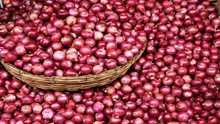
Horticultural crops are considered a viable diversification proposition for the traditional foodgrain crops owing to their higher per unit returns. The indigenous low-cost methods for storage of horticultural crops and foodgrains are designed to check microbial, enzymatic and oxidative spoilage in the stored/preserved materials. This produce can be stored safely up to a few months without excessive spoilage.
Vegetables like cabbage, cauliflower, green papaya, bean, pea, carrot, turnip, radish, pumpkin etc can be preserved by this method. Different vegetables can be preserved using this technique up to a period of about three months without much alteration in the nutritive value of the produce.
Process
Clean water required for washing the vegetables in order to remove blemishes, rotten part, if any. Vegetables need to be cut with a knife. Weigh 2 kg finely (1/8" to 1/16" thick) shredded cabbage and keep it in a clean plastic sheet or container and mix it with 2 kg shredded vegetables (almost any type of vegetables may be used except potato, sweet potato etc.). The proportion of cabbage may be more but not less than 50%. Cabbage contains desirable lactic acid bacteria and the nutrients which help in fermentation. (When cabbages are not available, radishes or cucumbers may serve the same purpose).

Add 22.5 gm of salt (NaCl) per Kg of shredded vegetables. Mix thoroughly for 3 to 5 minutes. Put the mixture in plastic/earthen/wooden buckets. (Wax lining is necessary for-earthen and wooden vats). Press vegetable mix with a hand so that brine can come up at the top of the vegetables.
Cover the container with a plastic sheet (200 gauge) which touches the surface of vegetables to avoid contact with air. Water needs to be poured (which must not mix with the vegetables) at the top of the plastic sheet so that adequate pressure on the vegetables is ensured. Fasten the bucket with a thread around the neck so that the entire system becomes almost air-tight.
Precautions
Cover the bucket and keep it in a safe place which will not let it spoil. Vegetables can be kept in this way for a period of about three months.
Once it is opened, the materials should be consumed on the same day. If it is not possible special presentation techniques like heat processing (bottling), refrigeration or addition of preservatives may be applied to preserve it for a longer period of storage for marketing.
Fermentation leads to a change in taste. The food becomes sour. If the product is too sour it may be washed thoroughly in water/hot water to make it free from acid and salt. Boil the vegetables and cook with spices to suit individual taste.
Advantages
The nutrition level of this fermented juice also increases in this way making it nutritionally sound. It has a characteristic odour and is rich in vitamin B and C. The liquid has a mild laxative effect. Heat the juice for a few minutes after adding a little sugar and spices and use as a soft drink. It is also a good appetizer.









